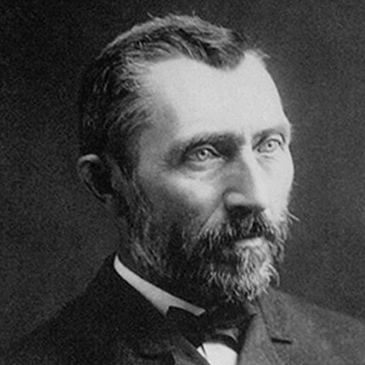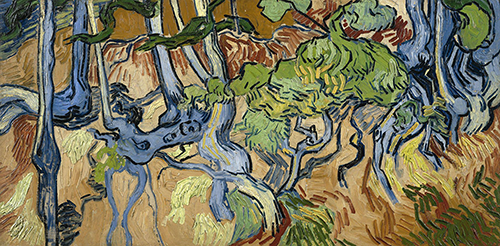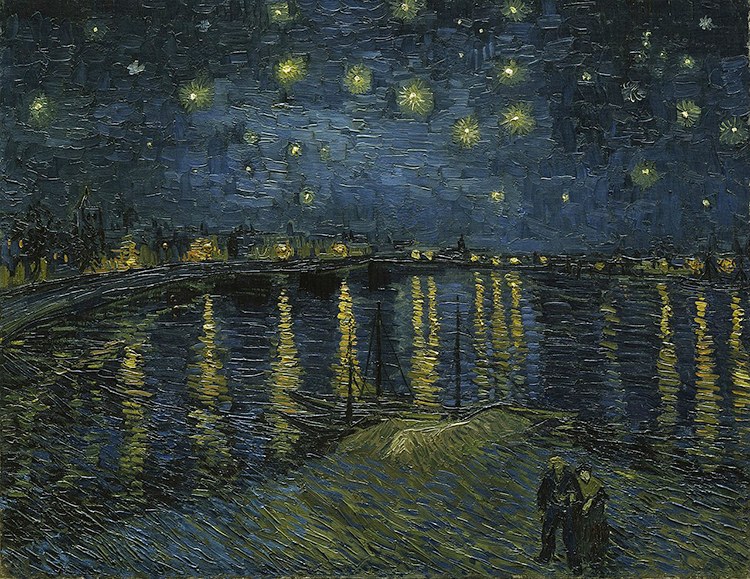Vincent Van Gogh art
Van Gogh is now among the most popular of the Post-Impressionist painters, although he wasn't widely appreciated during his life. He's now famed for the beautiful vitality of his works that are characterized by expressive and emotive use of vibrant colour and playful use of impastoed paint. The traumas of his life, recorded in his letters, have tended to dominate and distort modern perceptions of his artwork.
Vincent Van Gogh biography
Van Gogh was born in Holland, the son of a warrior; he travelled to London in 1873, and first visited Paris in 1874. During the next decade, he had been employed in a variety of ways, including as a lay preacher. By 1883 he had begun painting, and in 1885-6 he attended the academy in Antwerp where he had been impressed with Japanese prints and from the work of Rubens. On his return to Paris in 1886 he met artists like Degas, Gauguin and Seurat, and because of this lightened the colours he used.
Van Gogh worked hard and methodically but soon perceived the problem of self-training and the necessity to seek the advice of more experienced artists. Late in 1881, he settled in The Hague to work with a Dutch landscape painter, Anton Mauve. Van Gogh thus extended his specialized knowledge and experimented with oil paint in the summer of 1882. In 1883 the impulse to be"alone with nature" and with peasants took him to Drenthe, an isolated portion of the northern Netherlands frequented by Mauve and other Dutch artists, where he spent three weeks before returning home, which was then at Nuenen, another village in the Brabant. He stayed at Nuenen during the majority of 1884 and 1885, and during those years his art grew more and more assured. He painted three kinds of topics --still life, landscape, and figure--all interrelated with their reference to the daily life of peasants, to the hardships they suffered, as well as the countryside that they cultivated. Émile Zola's Germinal(1885), a book about the coal-mining area of France, greatly impressed van Gogh, and the sociological complaint is implicit in a number of his pictures from this period--e.g., Weavers and The Potato Eaters.
Vincent Van Gogh artwork
His comprehension of the possibilities of painting was proliferating; by analyzing Hals, he learned to depict the freshness of a visual impression, while the functions of Paolo Veronese and Eugène Delacroixtaught him that colour can express something by itself. This resulted in his excitement for Peter Paul Rubens and motivated his abrupt death for Antwerp, Belgium, in which the best number of Rubens's works could be observed. The revelation of Rubens's style of linear notation, as well as his capacity to express a mood with a mix of colours, proved decisive in the creation of van Gogh's style. Simultaneously, van Gogh found Japanese prints and Impressionist painting. These sources influenced him over the academic principles taught in the Antwerp Academy, where he was registered. His refusal to adhere to the academy's orders led to disputes, and after three months he left precipitately in 1886 to combine Theo in Paris. There, still worried about improving his drawing, van Gogh fulfilled Henri de Toulouse-Lautrec, Paul Gauguin, along with many others who were to play historic roles in contemporary art. They opened his eyes to the newest developments in French painting. At precisely the same time, Theo introduced him to Camille Pissarro, Georges Seurat, along with other artists of the Impressionist group.



